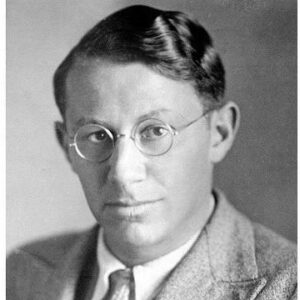Tadeusz Reichstein, a Polish-born Swiss chemist, shared the Nobel Prize in Physiology or Medicine in 1950 with Philip S. Hench and Edward C. Kendall. The three received the prestigious award for their work on adrenal cortex hormones. Reichstein was born in Poland to a Jewish family and moved to Switzerland when he was a toddler. He received his education in Zurich and had an interest in chemistry as a student. He began studying chemistry at the Eidgenössische Technische Hochschule (E.T.H.) after graduating from high school and obtained his diploma. After some time in the company, he began work on his doctorate with Professor H. Staudinger, with whom he would subsequently collaborate on research into the composition of flavoring compounds in roasted coffee. He studied the aromatic chemicals in chicory for many years and wrote a number of studies on the subject. He eventually earned a position at the E.T.H. as a lecturer. In the years that followed, he worked with E. C. Kendall and P. S. Hench on their seminal work on adrenal hormones. Cortisone was isolated as a result of this research, and its therapeutic potential in the treatment of rheumatoid arthritis was discovered.
Childhood and Adolescence
Tadeusz Reichstein was born in Wrocawek, Kingdom of Poland, on July 20, 1897, to engineer Isidor Reichstein and his wife Gastava Brockmann. His Jewish parents named him after Tadeusz Kociuszko, a Polish national hero.
Reichstein’s family relocated to Switzerland when he was a child. He had a private tutor for his primary schooling and then attended the Oberrealschule (technical school of junior college grade).
He was drawn to scientific endeavors at a young age, with a particular interest in chemistry. He began studying chemistry at the Eidgenössische Technische Hochschule (E.T.H.) in Zurich after graduating from high school in 1916 and completed his diploma in 1920.
He began work on his PhD under Professor H. Staudinger after a year in the industry. He began his studies on the composition of the flavour compounds in roasted coffee after graduating in 1922.
A Career of Tadeusz Reichstein
He continued to concentrate on the scent of coffee after receiving money from an industrial corporation for his studies. His research revealed that coffee’s flavor is made up of a variety of very complex compounds, including furan and pyrrole derivatives.
In 1929, he graduated from the E.T.H. as a lecturer, and then went on to pursue a career in academia. In 1931, he was appointed as an assistant to Professor L. Ruzicka, where he taught organic and physiological chemistry.
After finishing his coffee and chicory research, he moved on to other fields of study. In 1934, he was named Titular Professor, and in 1938, he was promoted to Professor of Pharmaceutical Chemistry. In the same year, he was appointed Director of the University of Basel’s Pharmaceutical Institute.
In 1934, he began studying the hormones of the adrenal cortex. Scientists had previously succeeded in obtaining adrenal cortex extract and had used it to prolong the lives of two rats who had undergone adrenalectomy.
Tadeusz Reichstein advanced the adrenal cortex extract study in conjunction with E. C. Kendall and P. S. Hench. Reichstein employed chromatography to isolate and identify new chemicals in the extract, and was successful in separating and characterizing the structure and chemical composition of roughly 29 hormones.
One of the hormones the trio extracted, cortisone, was later shown to be a potent anti-inflammatory with therapeutic potential in the treatment of arthritis. For many years, another hormone, desoxycorticosterone, was utilized to treat Addison’s illness.
He was appointed professor of organic chemistry at the University of Basel in 1946 and remained there until 1967. He also had a strong interest in botany, and in his later years he studied the phytochemistry and cytology of ferns.
He was an honorary member of more than 10 scientific associations and the author or co-author of 635 papers in addition to his academic career.
Major Projects of Tadeusz Reichstein
Tadeusz Reichstein, in collaboration with E. C. Kendall and P. S. Hench, conducted important research on adrenal cortex hormones, their structures, and physiological effects. They extracted and analyzed 29 hormones, including cortisone, to discover their structure and chemical makeup.
Achievements & Awards
In 1947, he was awarded the Marcel Benoist Prize, sometimes referred to as the “Swiss Nobel Prize.”
The Nobel Prize in Physiology or Medicine was awarded to Tadeusz Reichstein, E. C. Kendall, and P. S. Hench in 1950 “for their discoveries relative to the hormones of the adrenal cortex, their structure, and biological effects.”
In 1968, he was awarded the Copley Medal for “distinguished work on the chemistry of vitamin C and authoritative investigations of corticosteroids.”
Personal History and Legacy
In 1927, he married Henriette Louise Quarles van Ufford. One daughter was born to the couple.
He was a brilliant physicist who was also involved in community service during and after WWII. During the war, he assisted refugees from German-occupied nations, and after the war, he assisted disadvantaged students with their education.
Tadeusz Reichstein lived a long life and worked until he was ninety years old. At the age of 99, he died on August 1, 1996.
Estimated Net Worth
Estimated net worth of Tadeusz Reichstein is unknown.
Trivia
At the time of his death, he was the Nobel laureate with the longest life span.


